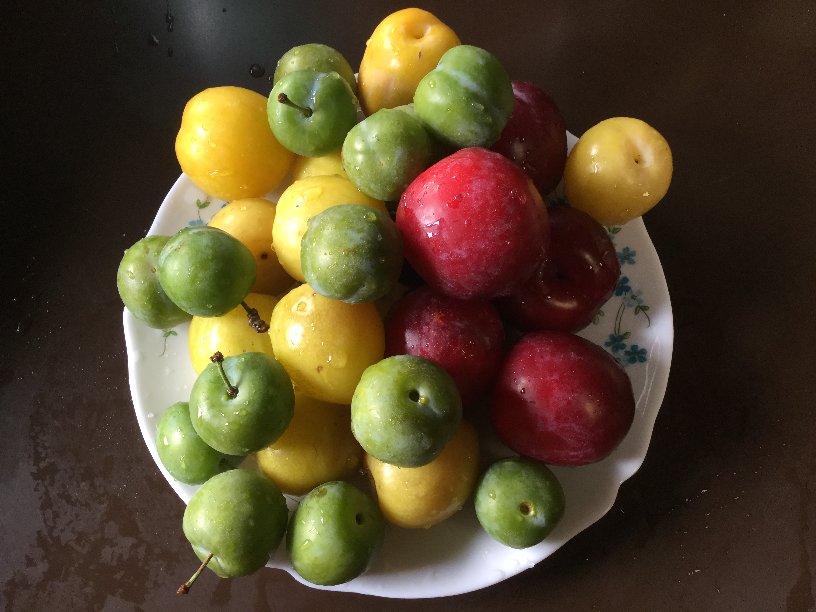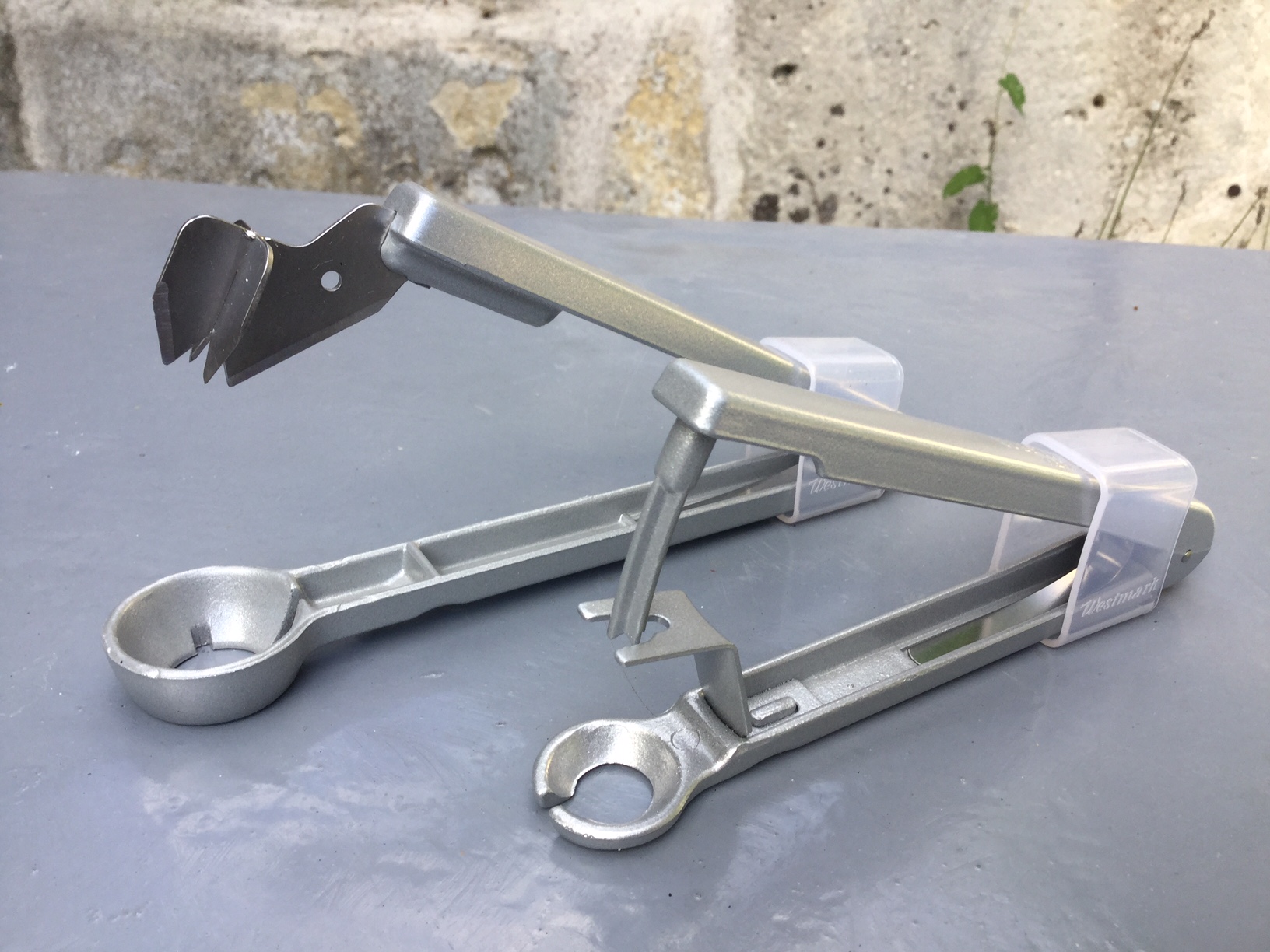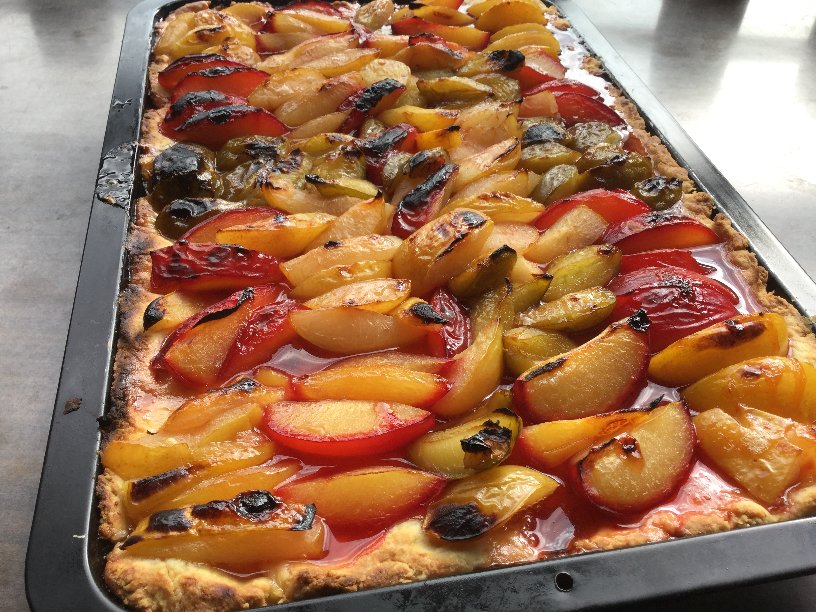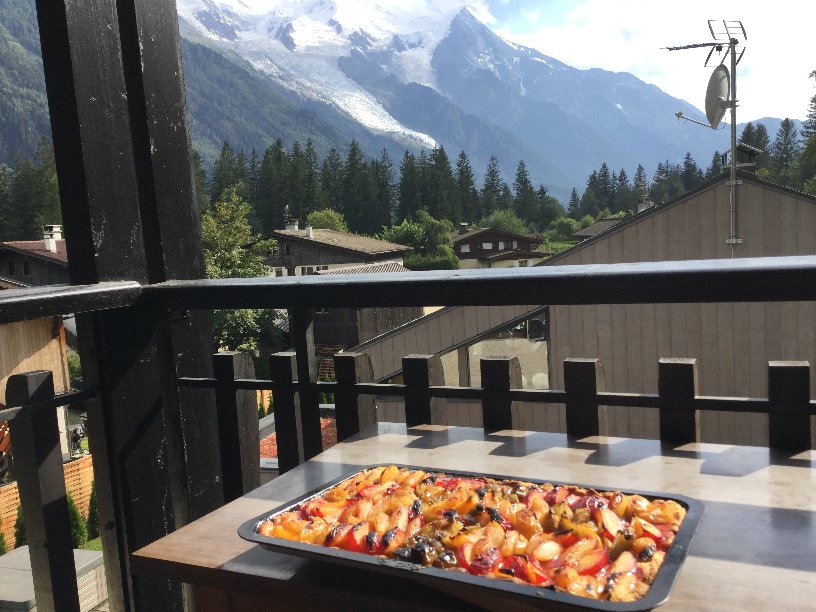Continued from Europe 2016 – Part 1.
A German Style Plum Sheet Cake
Our plum sheet cake experiment would happen, but at Chamonix in France, not in Bavaria. The key steps in our method are described below – follow them, or find a recipe for this type of cake in your cookbooks or on the Internet. It is a very easy cake (or tart) to make and well worth the effort. Experiment with different types of stone fruits, including apricots, nectarines and large cherries.
From Constance in southern Germany we travelled by train for a whole day to Chamonix in the France Alps. There we met up with two friends from Denmark. We were sharing a second floor apartment with an extraordinary view towards Mont Blanc. (In the following photo, taken from our balcony, Mont Blanc is the distant smooth bump in the middle. In the main photo at the top of this post, which was taken from a peak nearby at around 3,500 metres, it is the distant smooth bump towards the right.)
We were staying for a week and so one of our first chores was to head to a supermarket to stock up on essentials. I was certain I would find some zwetschgen, but there was no sign of these red-purple plums. But other plums were in season so I settled for a mixture of three varieties.
Two days later, after a three-hour morning walk on the mountainside we were back at the apartment early afternoon with the chance to try the plum cake for a late afternoon tea.
A recipe is not included here, just some suggestions which can help you make your own version.
We had found a range of recipes on the Internet. The main variation was with the base, which can be yeast based or shortcrust. We reduced the amount of sugar in both the pastry and over the plums because we wanted to emulate the non-sweet version of our German friends.
We didn’t use the Confiserie Neef recipe for the pastry as it was more complicated than could be achieved with the utensils available in the apartment and the ingredients we had on hand. And unfortunately we could not make much use of our new plum slicer and de-pipper. It was fine for the green plums, but too small for the larger yellow and red plums. The next photo shows the slicer next to a cherry stoner; the slicer has four blades that slice small plums as it takes out the pip. We think the slicer will be fine for slicing and de-pipping large cherries or small apricots to make a similar style fruit tart.
I opted for a shortcrust pastry using flour, butter, egg, milk and a small amount of sugar. I needed enough for the apartment’s 25cm by 40 cm flat baking tray. Use your own favourite yeast dough or favourite shortcrust pastry but with reduced sugar. Butter the tray and roll out your pastry or press it into the base to give a thickness of about half a centimetre. Chill until needed.
Have on hand around two kilograms of plums. Wash and dry them. Assuming you don’t have a plum slicer, use a sharp knife to cut in towards the plum pip several times, then slice off the pip to give the right sized segments. Arrange these in a side-by-side pattern on the pastry.
Bake for 20 minutes or so. Remove from oven and sprinkle with a little caster or icing sugar or brush with melted jam. Return to oven for about ten minutes to crisp up – increase the temperature a little if you wish but watch that the sugar (or jam) does not burn too much.
The cake lasts well, with flavours improving overnight. Reheat slices gently in the microwave.
Equipment: A 25cm by 40 cm flat baking tray or larger.
Difficulty: 3/5, Moderately Difficult. Twenty minutes preparation, thirty minutes cooking.
Serve: With plain Greek-style yoghurt (full-cream) or crème fraiche or double cream, and, if possible, with a lovely view!
Continued in Europe 2016 – Part 3.









